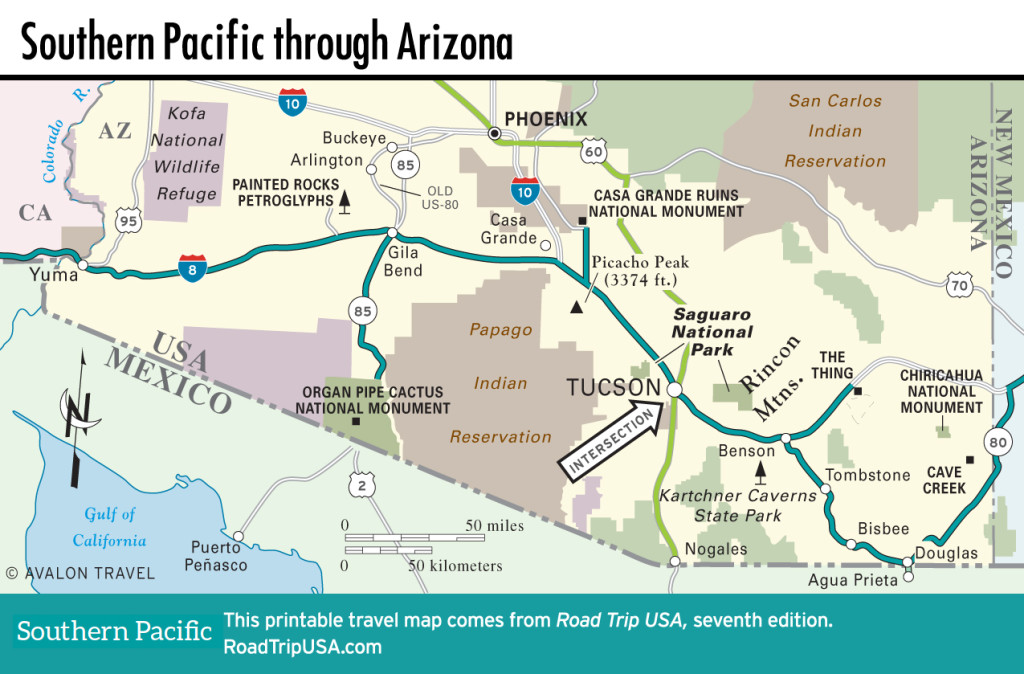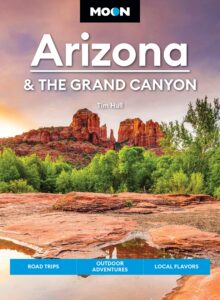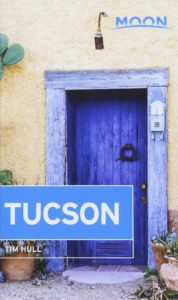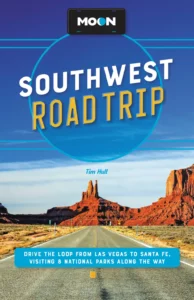Tombstone
While I-10 races east over the mountains, our more scenic route, promoted by tourism authorities as the “Cochise Trail,” winds south on old US-80 through the Wild West town of Tombstone (pop. 1,300), “The Town Too Tough to Die.” The route loops along the Mexican border before rejoining I-10 across the New Mexico border.
Though it’s just 24 mi (39 km) south of the freeway, and regularly inundated by bikers, RVers, and busloads of tourists, the rough-and-ready mining town of Tombstone has kept itself looking pretty much as it did back in the 1880s, when 7,500 miners called it home and one of the more mythic events of the Wild West took place here: the shootout at the O.K. Corral.
Historians, and everyone in Tombstone, still debate the chain of events of October 26, 1881. Was Wyatt Earp a sharpshooting savior, out to make Tombstone safe for decent society? Or was he a grandstanding cowboy whom history has romanticized? Decide for yourself after hearing all sides of the story. The O.K. Corral is still here, a block south of Fremont Street (old US-80), on Allen Street between 3rd and 4th Streets, with life-size black leather-clad statues taking the places of Virgil and Wyatt Earp facing down the Clanton brothers. Nearby, in a fenced-off outdoor theater, gun-slinging actors stage re-creations of the shootout. To see any or all of this, you have to buy a ticket at the entertaining Historama (520/457-3456, daily, around $10), adjacent to the OK Corral.
The dead men, and many hundreds of others, ended up at Boothill Graveyard (520/457-3300, daily, $3), along the highway at the northwestern edge of town, where you can wander among 300 wooden grave markers inscribed with all manner of rhyming epitaphs. The Boothill cemetery is the real thing, and the souvenirs in the large gift shop at the entrance are as wonderfully tacky as they come.
Though the OK Corral and Boothill are both fun, the best place to learn about Tombstone’s real, as opposed to mythic, history is at the Tombstone Courthouse State Historic Park (520/457-3311, $7), at 3rd and Toughnut Streets. Built in 1882, this old courthouse building holds 12,000 sq ft (1,115 sq m) of artifacts documenting and describing the real Wild West.
Despite the huge numbers of people who descend on Tombstone every day, and the gauntlet of T-shirt and knickknack shops catering to them, the town is still an appealing place to visit. Enjoy a cool drink at the truly historic Big Nose Kate’s Saloon (417 E. Allen St., 520/457-3107), named for, owned, and run by Doc Holliday’s brothel-keeper girlfriend. The authentic old saloon now hosts live music and serves the tasty “Goldie’s Famous Overstuffed Reuben.”
Every day in summer, just about every hour on the hour, historic gunfights are reenacted all around Tombstone. During the third week in October, the whole town comes alive with a weekend of shootouts and parades during Helldorado Days. Places to stay are not extensive, nor expensive: Try the centrally located Tombstone Motel (502 E. Fremont St., 888/455-3478 or 520/457-3478, $70 and up), on the main road.
Fly’s Photos
The work of Wild West photographer Camillus S. Fly (1849-1901) forms one of the primary records of life in frontier Arizona. Fly was born in Missouri and raised in Napa, California, then moved to Arizona to open a portrait studio in Tombstone, which has been restored as part of the O.K. Corral Historama complex. His iconic images, preserved in the Library of Congress and here displayed in the small gallery, include some of the earliest photos taken of Chiricahua Apache warrior Geronimo, photographed soon after his 1886 surrender. Fly’s studio also displays his images of Wyatt Earp, “Doc” Holliday, and many others. What Matthew Brady was to the Civil War, Camillus S. Fly was to Tombstone in its 1880s heyday.

















